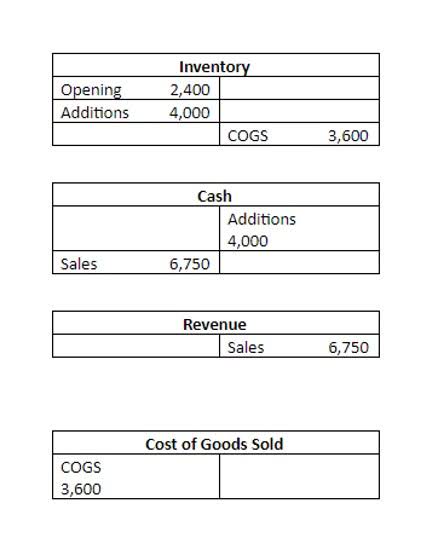
Treasury managers look for investment opportunities that align with the company’s long-term objectives and ensure that the company’s capital is used effectively. While both management systems focus on the roles of investments, money, and liquidity for the company’s financial health, cash management tasks are much more pinpointed and direct with banks and on-hand cash. On the other hand, treasury management focuses on more broad tasks for operational and financial risk, such as investment needs and business partnerships or accounts.
- Discover how CashSimple® meets your unique needs to streamline operations and keep accounting ledgers accurate.
- Asset risk management is essentially a fusion of asset management and risk management.
- You could set up a shared service center for handling global transactions to optimize efficiency.
- In this post, we’ll cover both cash management and treasury management and the differences between the two.
- But let’s not forget the outflow – significant expenses like the payroll for a global team of tech wizards.
- These obligations can include payments owed to suppliers (accounts payable), liabilities like loan repayments, and other business expenses such as salaries.
- Cash management and treasury management serve different but complementary roles in your financial strategy.
Optimizing Cash Flow Forecasting
- With the lower risk of human error or theft, you can rest assured that your business can focus on core tasks instead of taking the time to manually reconcile cash discrepancies.
- If half of your customers make up half of your AR balance, you need an in-depth view of that material activity — which could affect your cash.
- Shorter term goals might include building towards a new funding round or IPO while longer term the focus may be on maximizing profitability or minimizing operational risks.
- IHBs may handle core treasury payments or have broader functions, including A/R and A/P processing.
- The aim is to identify and address any risks that could significantly impact the business goals.
- Strong cash balances help companies to weather financial uncertainties and contributes to optimal working capital levels that support overall business growth and success.
- Payment controls help accounts payable (AP) departments avoid losing money due to fraud, late payment fees, and other errors.
Let’s take a look at the critical area of cash management — ensuring that cash is in the right place at the right time. Cash management also helps you accurately anticipate future cash needs and surpluses, allowing you to invest and borrow more strategically so you can increase revenue and reduce costs. Cash management is one critical treasury management function and should be monitored closely by business owners. On the other hand, if you identify periods of cash shortfall, you could negotiate with vendors for longer payment terms to smooth out your cash flow, preventing the need for external financing. This could also involve collaborating with your sales team to offer incentives for clients to prepay annual contracts, thereby getting more cash upfront.
Maintaining access to medium- and long-term debt and equity financing

In business, cash management is a key component of a company’s financial stability. Through the process of collecting and managing cash flows, your ultimate goal is to maximize liquidity and minimize the cost of funds. The treasury team manages the incoming cash and optimizes treasury management vs cash management how it’s used within the business. Whether it’s paying back the initial $5 million dollar loan or preparing for possible liabilities and financial risks, the process of treasury management ensures that the company does not go into unwanted debt.
Understanding the Cash Flow Statement
Key aspects include managing accounts receivable (money owed to the company) and payable (money the company owes) https://www.bookstime.com/articles/rental-property-bookkeeping-tips-for-landlords to maintain a healthy cash flow. They want to ensure that they are getting the most up-to-date picture of how the cash is moving in and out of an account, as well as who is making a certain transaction. The proper tools will take their bank statements and instantly match or reconcile them to customer payments, simplifying money movement and making cash management easier. If CircleM has a customer base of 100,000 users, its cash management system must operate at a much higher scale. Monitoring and tracking transactions at this level is considerably more difficult.

Veeva Improves Cash Flow with Tesorio
Some companies create a global business services (GBS) group — also known as centers of excellence — to offer support to multiple business units. Unlike SSCs, GBS groups not only provide various services but also include business advisory functions, such as continuous improvement or internal consulting, to enhance operational efficiency across business units. Cash management keeps things running day-to-day, while treasury management is about making sure you’re ready for what’s ahead. They keep an eye on the economy, your industry and your business, helping you prepare for bumps in the road and make smarter investment decisions. In business terms, float refers to the time delay between the movement of funds from one account to another.

- On a day-to-day basis, treasury management may be administered by the controller or other accounting staff.
- It involves predicting future cash inflows and outflows to optimize cash utilization and make informed financial decisions.
- Importantly, treasury management helps you as a business owner mitigate your business’s financial, operational, and reputational risks.
- It plays a central role in shaping long-term financial strategy and resilience.
- Every company, regardless of size, needs to have some level of a cash management capability, as it’s a critical component of financial security.
- For a lot of companies, treasury management in practice means cash management – the various other sub-functions are simply not considered to be worth the time and effort given the company’s situation.
- Treasury Management Systems (TMS) are software applications that serve to help businesses simplify their payment operations by automatically tracking things like cash flow, assets, investments, and more.
A positive cash flow shows that your business’s liquid assets are growing, which can help you pay off debts, reinvest in the business, and more. The greater flexibility you have with your cash flow, the stronger your overall business will be to both take advantage of boom times as well as weather downturns. Liquidity management provides visibility into cash positions over past, present, and future dates and provides an overview of the financial health bookkeeping of a business. Let’s say that a startup called MyPieDoe plans to build and launch a new product and the treasury team needs an investment of $5 million for the project. Part of their job is to determine whether that initial investment comes from raising capital or accessing bank loans—and how to distribute those funds. As a business owner, knowing the difference between cash management vs. treasury management to efficiently streamline and grow your business is crucial.

An evaluation system is needed which could objectively and thoughtfully reflect the dynamics of the bank in achieving the goals and objectives of shareholders and promptly diagnose deviations from the expectations. The practice of accounting in Ukrainian banks indicates a lack of information for m… As your company grows and adds complexity, you will need additional resources to fulfill growing treasury requirements. Still, there is a lot a controller can do to manage risks and optimize returns. Increasingly, the right systems can make us controllers a lot more powerful and a lot more effective at managing the cash in our organizations.
The main objective of the cash flow statement is to display the cash that is presently available for the business to use. For small businesses getting back on their feet in 2021, it’s a good time to review the basics of cash management 101. Keep reading for treasury management tips and your best options for cash management help. Effective and streamlined cash management is essential for your business’s prolonged and long-term success.
- Cash management helps a business to maintain adequate cash balances, meet its payment obligations, reduce transaction costs, and maximize its returns on idle cash.
- Cash management and treasury management are often used interchangeably, but there are differences between them, and the scope of treasury management is much larger.
- When I worked in a public company, we really focused on the areas of AP and spend management when looking at cash management.
- These files help banks execute large volumes of ACH payments through The Clearing House (TCH) and Federal Reserve.
- If there’s a risk of cash depletion, comprehensive cash management can make it easier to balance cash flow and replenish funds.
GUIDELINES
This paper examines the basics of cash management for financial management and financial reporting purposes. This study makes use of descriptive research method to examine the importance, essence, influence, relationship, and impact of cash management on financial management and financial reporting. It also ascertains the need for the use of net cash flows as a measure of performance.
